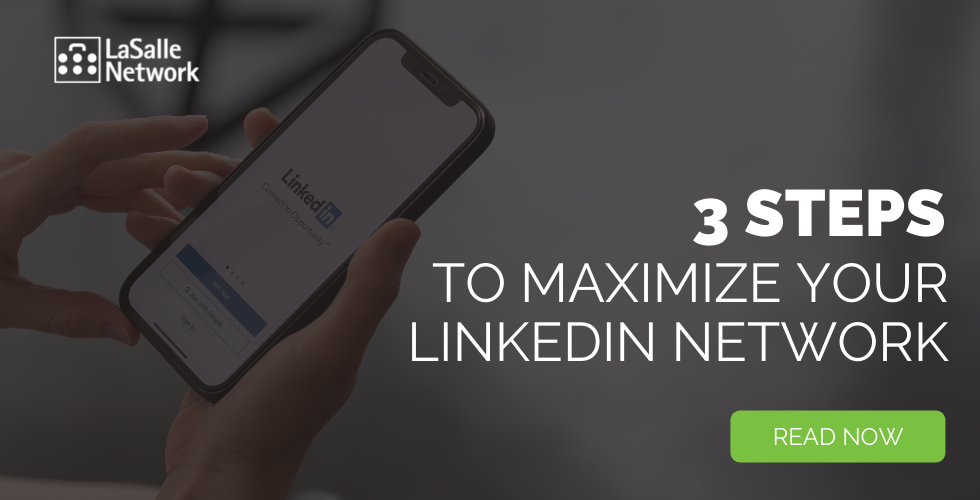With the ability to connect with thousands of professionals and potential employers almost instantly, LinkedIn can be a highly effective job-searching tool if used appropriately. It not only serves as an online, professional resume, displaying experience and abilities to hiring managers, it gives job seekers the ability to connect with and capitalize on a large network of professionals.
However, not everyone considers their LinkedIn network when seeking a new job opportunity. Here’s how:
Step 1: Identify Existing Connections
After building out a targeted list of industries and/or employers, begin leveraging current connections who work in the identified industries and companies. They‘ll likely provide a more accurate picture with relevant information about working at the organization or in the industry than what an online search would yield. They may also be able to provide interview tips or have knowledge of open roles not advertised online.
When first reaching out to a contact, be sure to tailor the message in a way that is appropriate to the relationship. Inquire about their experience working at the organization and about the hiring process. You can also ask to set up a call to discuss further.
Once the conversation has progressed to discuss the role, ask if the contact would be willing to make an introduction to someone in a hiring capacity via email or a LinkedIn direct message. A referral from a trusted contact is one of the most valuable components of a job application. According to LinkedIn, 50% of recruiters say that leads from a referral are the best source of quality new hires.
Step 2: Identify New Connections
Utilize LinkedIn’s Alumni tool. This is an easy way to connect with fellow alumni who serve as great resources for mentorships, references and to gain tips or advice. This tool shows where alumni work, where they live and what they studied, and it can be used to seek out alumni working in a targeted field or company. Even if someone graduated before or after you, or studied a different major, they are likely to be supportive when a connection is made.
Utilize LinkedIn Groups. The Groups tool is a great way to network with industry-specific professionals and gain insight into the trends and leading voices within that space. From the news members discuss to the content and articles they share, you’re able to not only learn but network with contacts and engage in virtual dialogue before requesting a connection. Groups can also be a tool for finding new organizations to target while job searching as some companies post about open positions.
Research target organizations. By viewing a company page and selecting ‘People,’ those who work at the organization and their titles are listed. Consider reaching out to individuals with similar titles or on a desired team to ask about their experience and advice.
Step 3: Message New Contacts to Connect
If you find someone but are not already connected with them, rather than just hitting “connect,” be sure to personalize every connection request. When it comes to a LinkedIn network, quality connections are more valuable than quantity. Reaching out with a personalized message adds more value and stands out as a personal touch.
When reaching out to a new connection, the message is extremely important. Keep your messages short, professional and unique. Don’t rely on LinkedIn messaging templates. Mention interest in the job opportunity, but do not start by asking them for a reference or introduction. Instead, inquire about them and their experience within the organization or industry and work to develop rapport before requesting their help.
Looking for more information on how to utilize LinkedIn? Download our guide for Optimizing Your LinkedIn Profile here.





